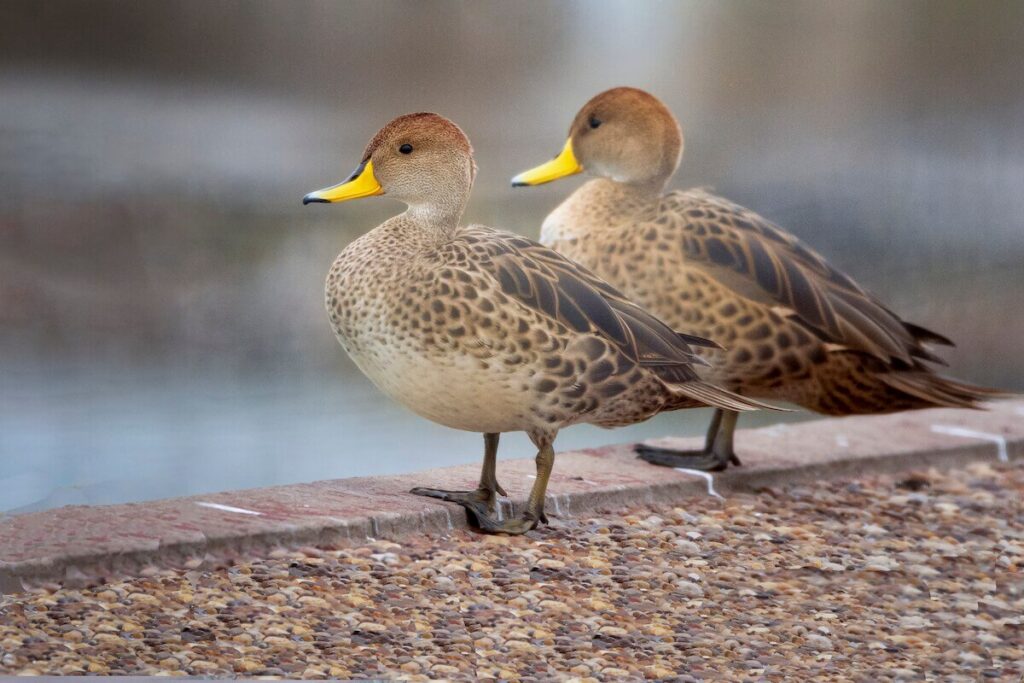Yellow-billed Pintail

Scientific Name
Anas georgica
Alternative Names
Yellow-billed duck (regional), South Georgian pintail (for subspecies A. g. georgica), Chilean pintail (for subspecies A. g. spinicauda)
Measurements
| Feature | Male | Female |
|---|---|---|
| Body Length | 41–51 cm | 41–51 cm |
| Weight | 600–800 g | 550–750 g |
| Wingspan | Around 80–90 cm | Around 80–90 cm |
Status
Classified as Least Concern overall. However, the South Georgia subspecies has a small and localized population, and the Colombian subspecies A. g. niceforoi is extinct.
Identification
A medium-sized dabbling duck with a brown mottled body and pointed tail. The head and neck are brown, while the bill is yellow with a black stripe down the center and a dark tip. The upper wings are greyish-brown with a blackish-green speculum. Often confused with the yellow-billed teal but can be told apart by its larger size and more distinct bill markings.
Voice
Soft whistles from males during display. Females produce a lower, rasping quack. Generally a quiet species outside breeding season.
Diet
Feeds by dabbling in shallow water. Eats aquatic plants, seeds, grasses, algae, insects, larvae, small mollusks, and aquatic invertebrates.
Distribution
Found across much of South America, the Falkland Islands, and South Georgia. The spinicauda subspecies is the most widespread, while the georgica subspecies is restricted to South Georgia.
Habitat
Occupies lakes, marshes, brackish lagoons, coastal wetlands, rivers, and grassy highland wetlands. Found from lowland coasts to high Andean lakes.
Breeding
Nests on the ground hidden in vegetation close to water. The nest is lined with grass and soft down. Lays 4 to 10 eggs, incubated for about 26 days, mainly by the female. Chicks are dark brown above and yellowish below.
Wintering
Mostly resident throughout its range. Some local movement occurs depending on water availability and climate conditions, especially in high-altitude areas.
Conservation
Global population stable, but threats include habitat drainage, hunting, and introduced predators on islands. The South Georgia subspecies needs monitoring due to its small range. The Colombian subspecies is extinct.
